4 Canva SEO Strategies That 10X Their Organic Traffic
Digital Business
4 Canva SEO Strategies That 10X Their Organic Traffic
Have you ever looked for your keys just to find out they were right in front of you the whole time? SEO is really no different. The keys to a brand’s success are often hidden in plain sight.
Take Canva for example, they’re one of the fastest-growing companies whose HQ is right across from our office in Surry Hills. They’ve got 60 million monthly active users across 190 countries.
This is the type of growth that most companies dream of.
Here are some creative strategies you can learn from Canva to acquire more customers:
Bait & Switch 301 Redirects
Ever heard of Type Genius?
Neither did I.
Here’s a snapshot of what it looked like back in 2016:
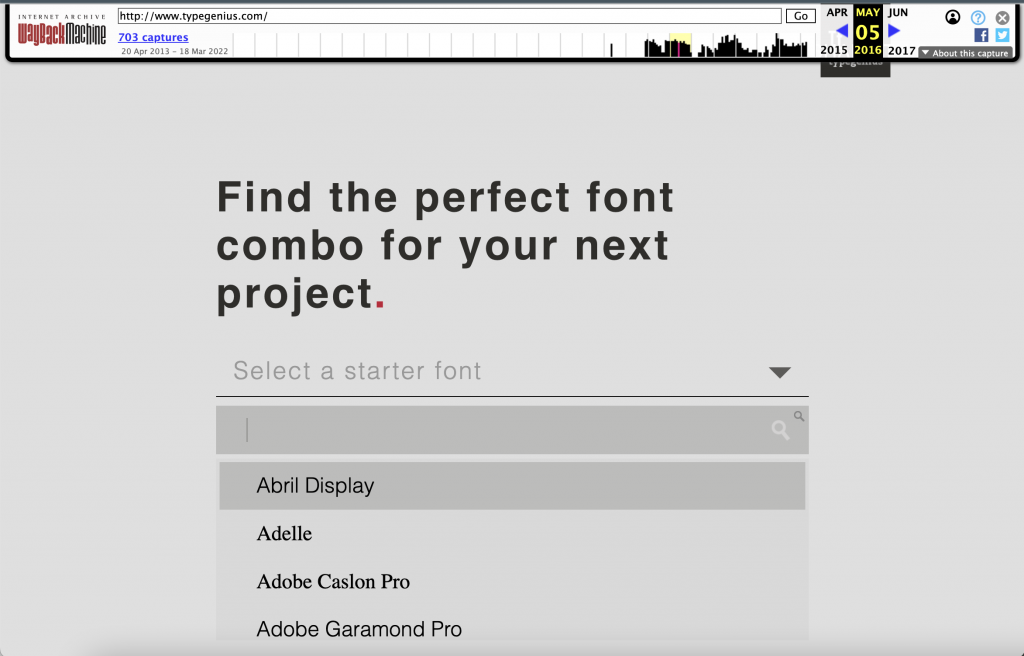
You could choose a starter font and then it shows you aesthetic fonts that match. It’s a bit ironic considering how unaesthetic this page looks but that doesn’t matter.

Canva probably didn’t care about how it looked anyway. What they were after was something much more important, links.
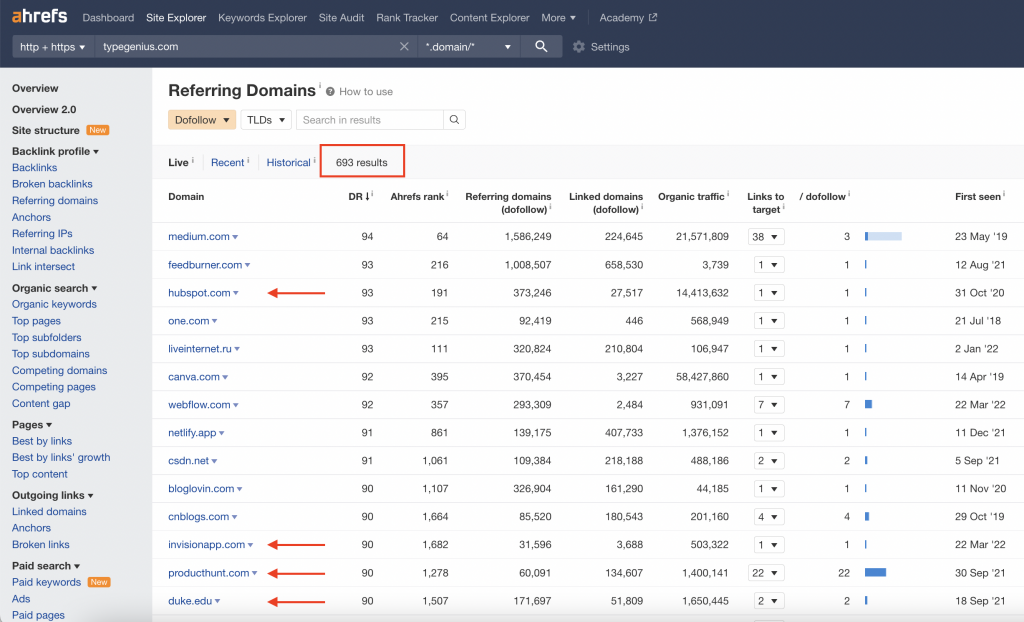
Typegenius had amassed 693 dofollow referring domains from sites like Hubspot, Invision, Product Hunt and Duke University.
In late 2016, Canva acquired this tool in order to tap into these powerful links.
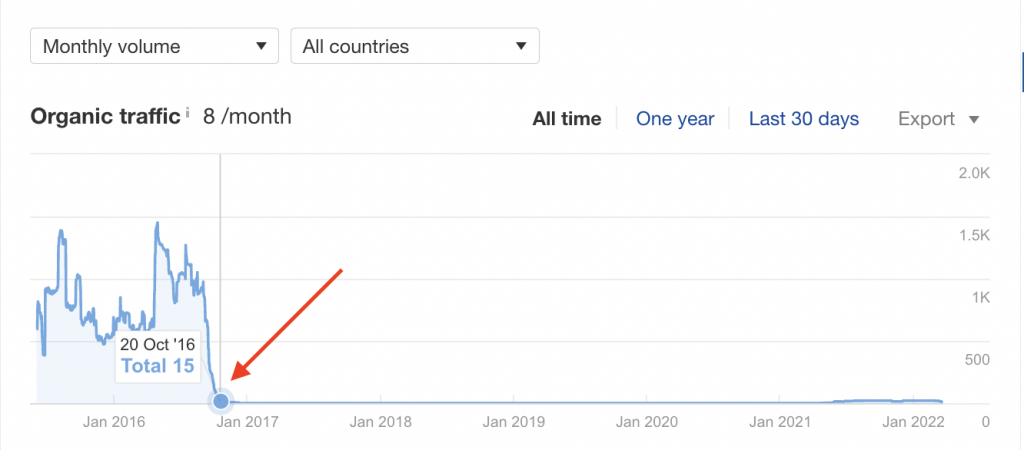
If we assign an average link value of about $70 per link. It would have cost you $48,510 to build those links yourself.
Did Canva pay $48,510 for this tool? Only they know but I’d say they paid a LOT less. Seeing what decent expired domains go for today, I’d say about $7K – $10K+. That said Canva may have also acquired this business and redirected it as part of an SEO-driven play.
After acquiring this domain and the tool, they had to make it look pretty because well…it’s Canva.

They 301 redirected https://www.typegenius.com -> https://www.canva.com/font-combinations/
The page was live and started bringing in more organic traffic, reaching upwards of 9K per month. Imagine an extra 9,000 eyeballs checking out your brand every month.

Not only did acquiring this domain bring in more organic search traffic but it also increased the domain authority of Canva.
An increase in domain authority can boost a website’s overall KW rankings.
It gets better. Canva put the pedal to the floor and began to build more links to this page. Through their outreach efforts and natural links, they were able to reach 1.8K referring domains.
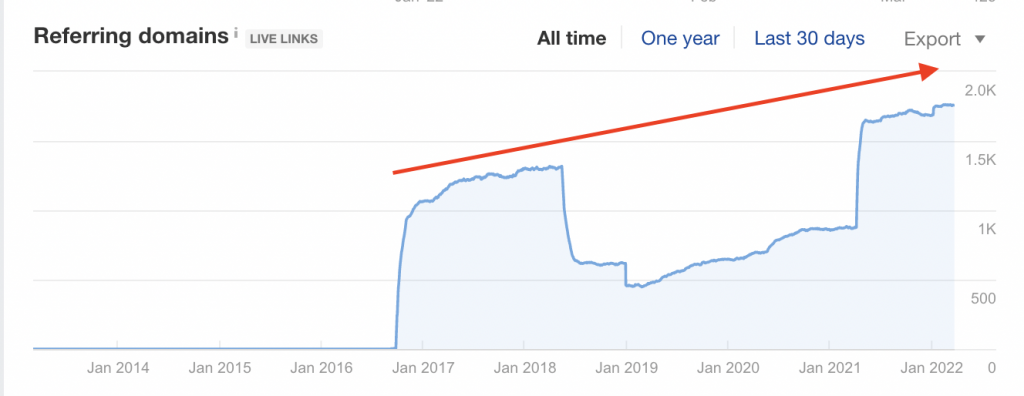
In June 2021, they redirected….again.
They 302 redirected https://www.canva.com/font-combinations -> https://www.canva.com/learn/the-ultimate-guide-to-font-pairing/
If Canva meant for this to be a consolidation of link equity, they should have used a 301 redirect.
While 301 redirects are best practice, 302’s eventually get treated as 301s over time.
Eventually, we see traffic drop off for the font tool page after it’s redirected.
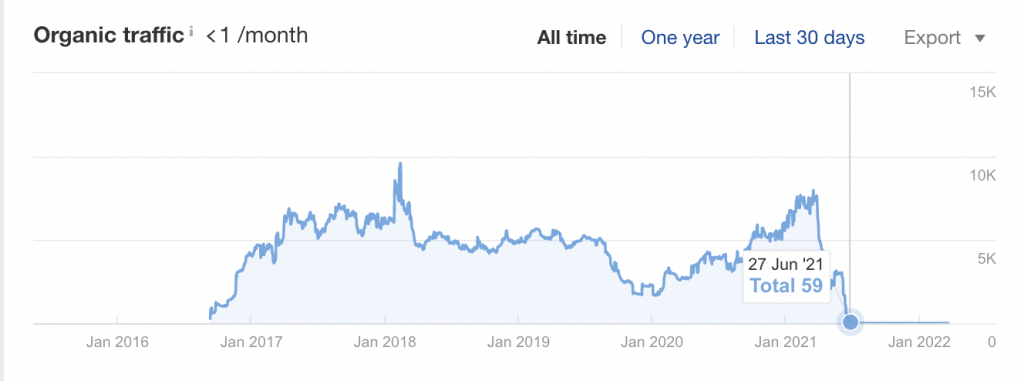
They created the ultimate guide to font pairing in 2018. Looking at this page in their analytics, they could have saw that the customer conversion rate was higher for the guide than the font pairing tool.
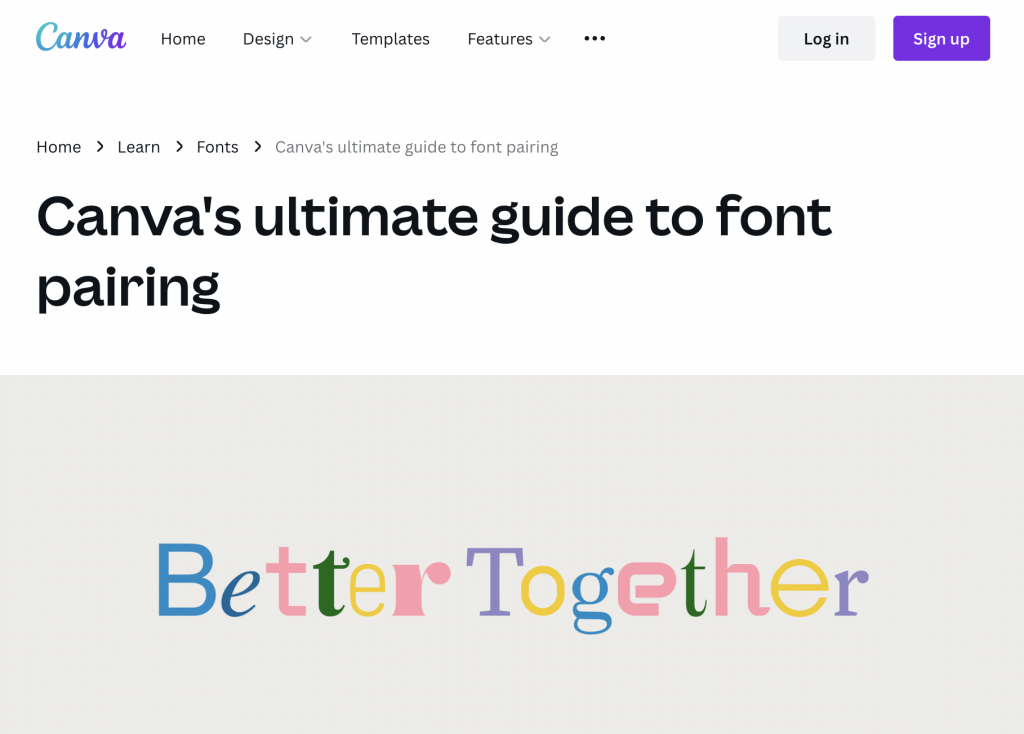
The guide was only doing about 4K per month in organic traffic. Perhaps they thought they had only scratched the surface in terms of the organic traffic potential. After the latest 302 redirect, search traffic shot up to 50K organic visitors in one month.

Now the guide ranks for over 17K keywords such as “font combinations” and “font pairing” and that’s just in the US alone. Canva gets traffic all over the world for this page from other countries.

They went from 0 to 50K organic visitors per month from one tool acquisition.
Even though the search intent of these keywords aren’t commercial, I’d bet a nice chunk of this organic traffic generates sign-ups on autopilot.
Think about it.
People who want to learn about font combinations are interested in design. They’re most likely beginners with little to no experience.
This sounds a lot like Canva’s target customer, doesn’t it?
Amazing Interactive Guides
Canva’s business model is to try before you buy.
They pave the way to paying customers by offering massive value upfront for free. They give you access to professionally designed templates that any design newbie can turn into a masterpiece.

You can’t just have the world’s best product and not promote it. Word of mouth is powerful but can take forever without consistent traffic.
Canva funnels people into their freemium model by creating interactive guides with huge search volume like this:
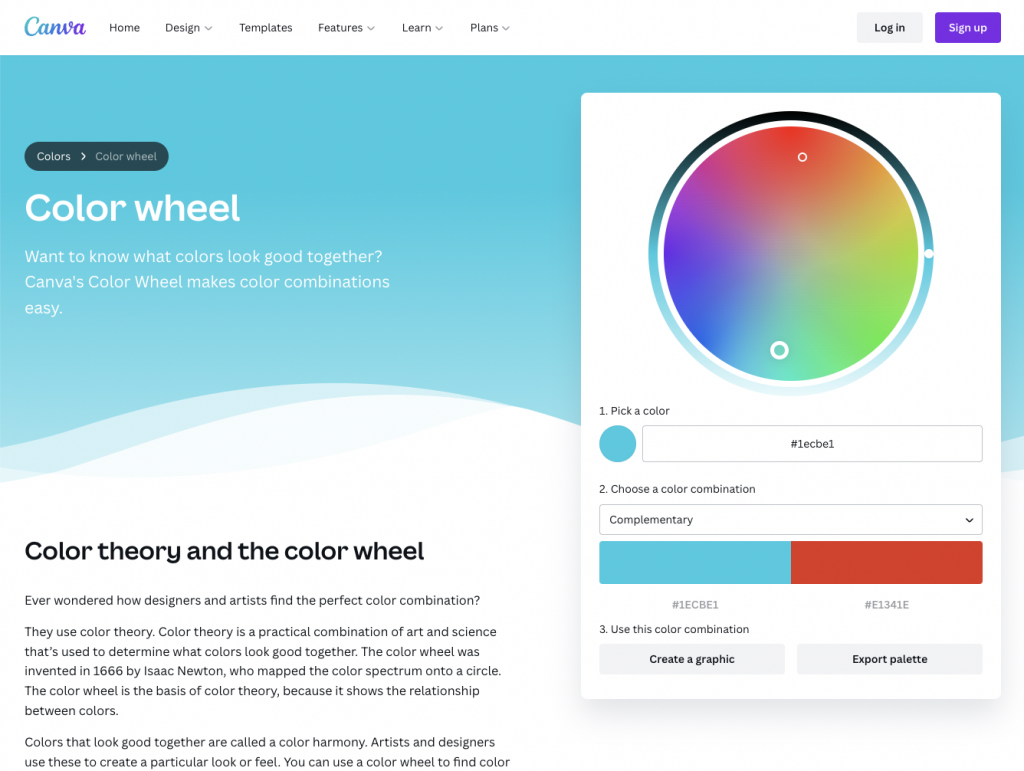
As Canva teaches you about color theory, the color scrolls with the page. You’re able to visually test out what you’ve learned. You can even export the color palette or click on “create a graphic” to take their product for a spin.
It’s no secret that interactive guides with targeted search traffic can snowball into an unstoppable amount of natural links and traffic. This particular guide receives about 242K visitors every month from Google.
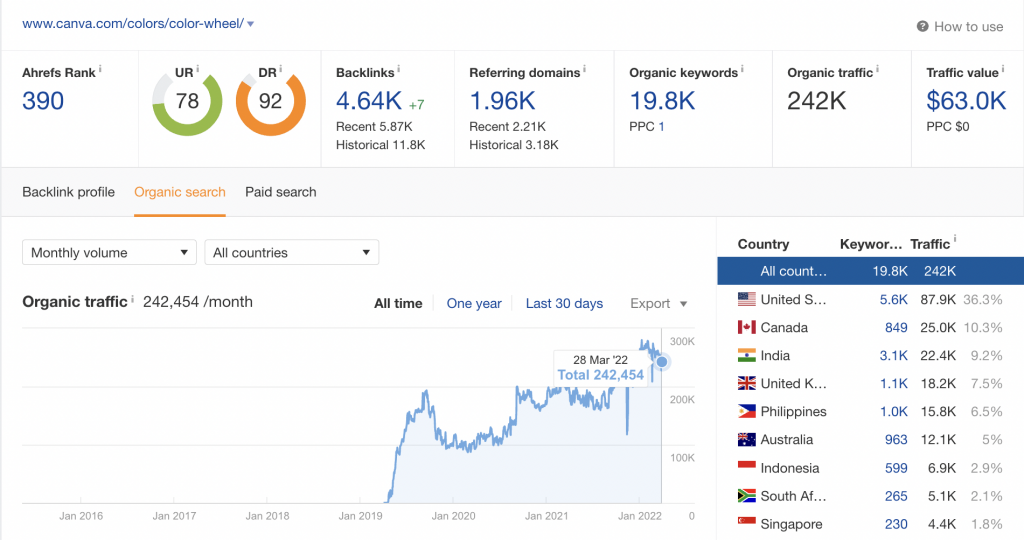
After you learn about color theory, there’s a call to action at the bottom of the page to try Canva for free.

This is only one way they funnel visitors into their “try before you buy” model.
Templating Landing Pages
There’s a huge opportunity in templated landing pages. If you’ve never tried this strategy, you’re missing out. It starts with a group of keywords that share a similar theme.
If we do some quick research and look for keywords that contain “maker” and “free”, you’ll see that there are thousands to target.

The reason why templated pages are so valuable is that you can create the perfect page one time and scale it across multiple keywords.
Here’s an example, “free logo maker” gets 60K searches per month. We also can see “free flyer maker” gets 5.2K searches per month. Both are relevant to the business.
Canva’s UX/UI team and designers create one page and use it for each keyword.
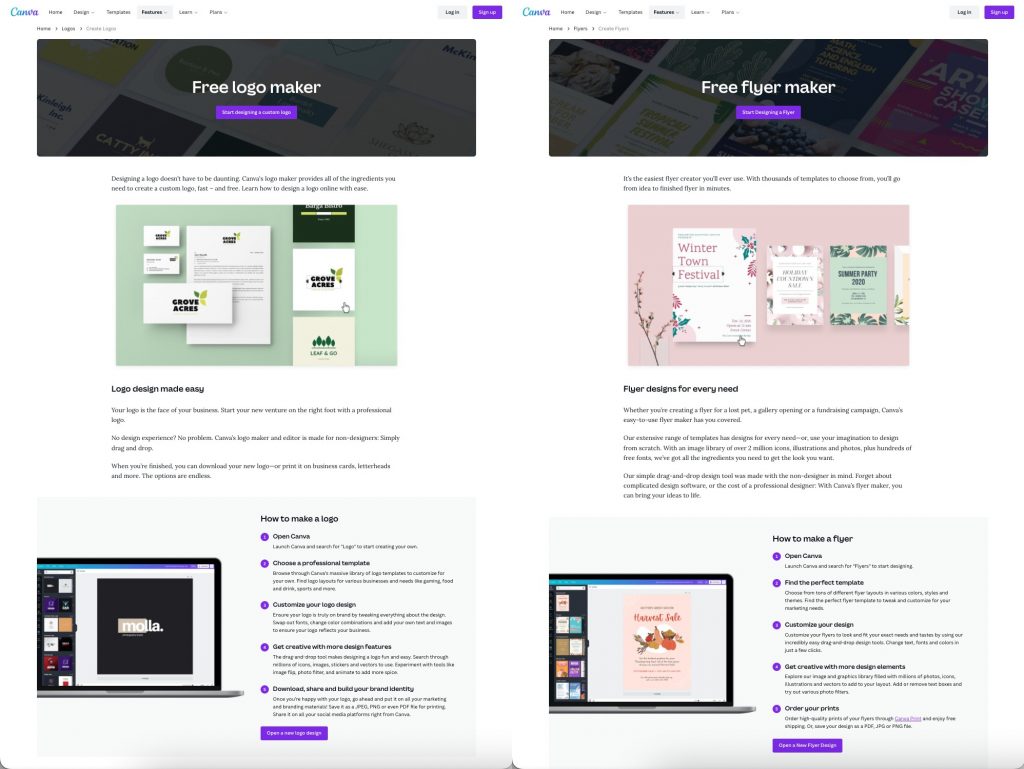
Notice how the layout is exactly the same. All they did was swap out images and text which scales at a faster rate than constantly designing new landing pages.
Rather than use plain blog post templates, these custom landing pages can create a better user experience and user behavior signals.
Google is arguably monitoring pages with AI to determine which deserve the top spot for a particular keyword.
If the resources you put out are just plain text, you could have trouble standing out amongst all the noise.
By scaling out hundreds of keyword-targeted landing pages, you can reach customers faster and convert more people.
Listicle Outreach And Embedded Widgets
Building your website’s domain authority can allow you to tackle more competitive keywords that can drive sales.
The problem is: how do you build authority at scale?
You’ll need a massive amount of links from an array of different websites.
One method of acquiring links is through email outreach.
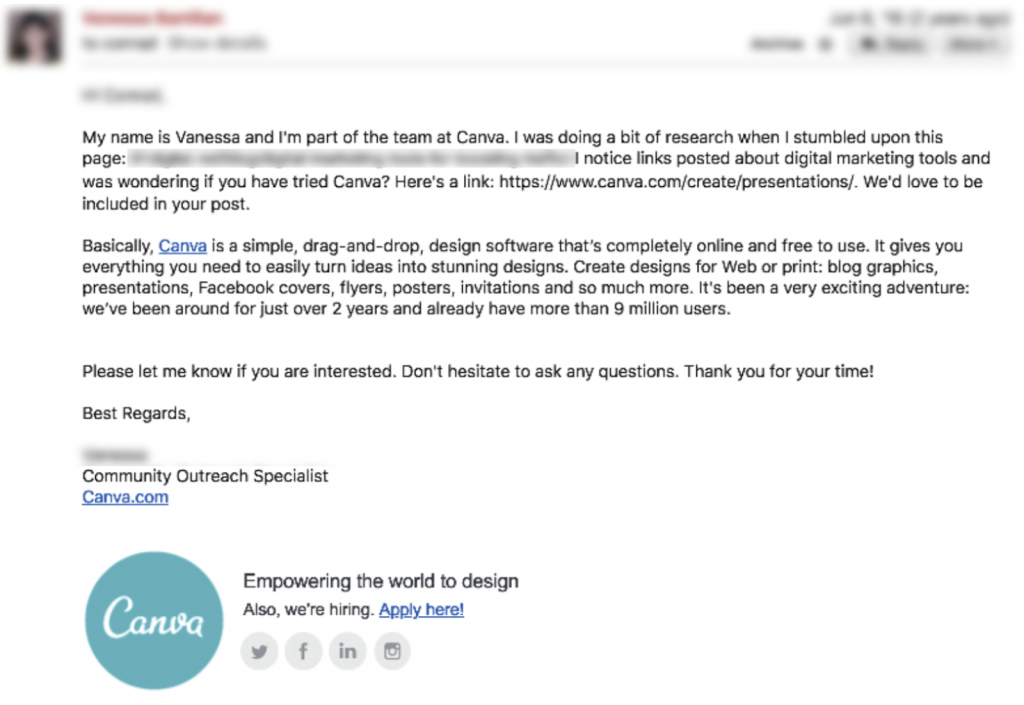
Here it’s quite obvious that Canva created a massive prospect list of articles about digital marketing tools.
People are naturally open to linking out from these articles because they want to feature the best tools from across the web.
While getting links from these listicles can help propel your SEO forward, they can also bring referral traffic that converts into customers.
Another strategy Canva uses is widgets.
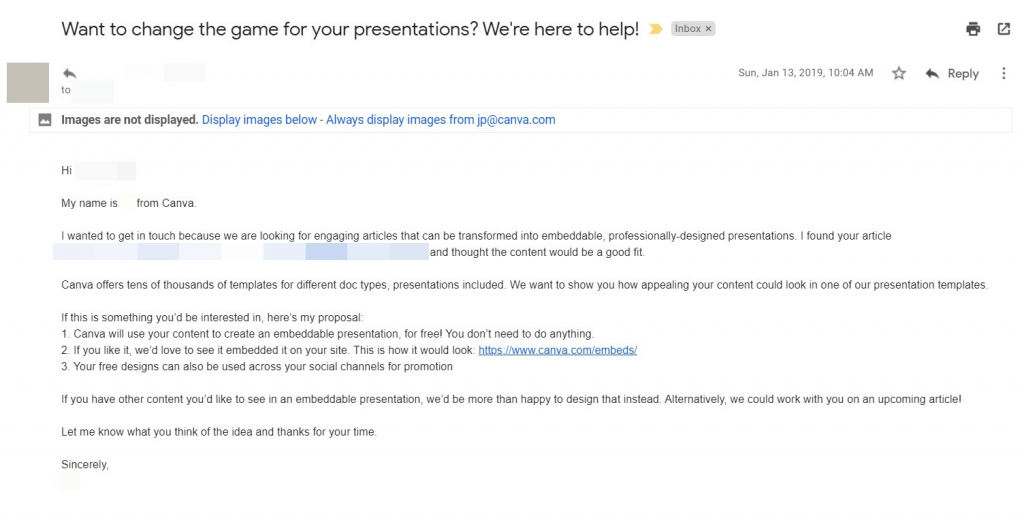
Instead of asking for the embed first, they offer value by saying they’ll create a free embeddable presentation for the email recipient.
They aren’t pushy in saying, “if you like it, we’d love to see it embedded on your site”.
Here’s an example:
Design by Nicholas DyerYou can see that the Canva branding is in the left-hand corner and there’s a logo link that tracks how many people click through to Canva’s homepage.
We can spy on the success of this campaign by seeing how many links point to the prefix:
https://www.canva.com/design/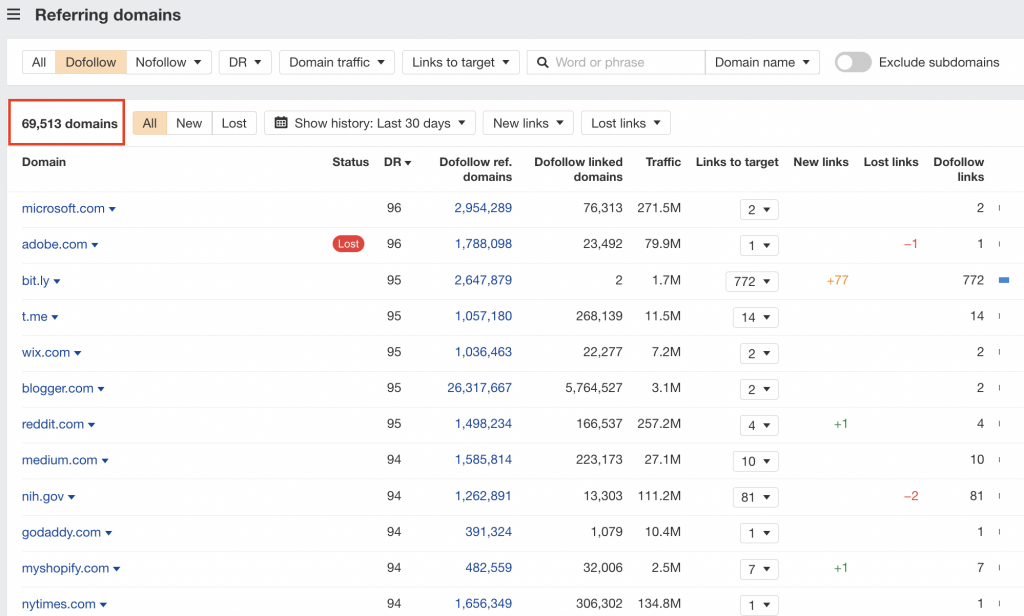
Over 69K sites have used Canva’s embedded presentations since doing this style of outreach.
That’s a ton of brand exposure and referral traffic.
They could have capitalized more on link equity but they decided not to include a link to their homepage from outside the iframe:
<div style="position: relative; width: 100%; height: 0; padding-top: 56.2500%;
padding-bottom: 48px; box-shadow: 0 2px 8px 0 rgba(63,69,81,0.16); margin-top: 1.6em; margin-bottom: 0.9em; overflow: hidden;
border-radius: 8px; will-change: transform;">
<iframe loading="lazy" style="position: absolute; width: 100%; height: 100%; top: 0; left: 0; border: none; padding: 0;margin: 0;"
src="https://www.canva.com/design/DAE75g1GHr0/view?embed" allowfullscreen="allowfullscreen" allow="fullscreen">
</iframe>
</div>
<a href="https://www.canva.com/design/DAE75g1GHr0/view?utm_content=DAE75g1GHr0&utm_campaign=designshare&utm_medium=embeds&utm_source=link" target="_blank" rel="noopener">Design</a> by Nicholas DyerInstead, the “Design by” link points to a nofollow, noindex presentation page which won’t credit Canva with link equity.
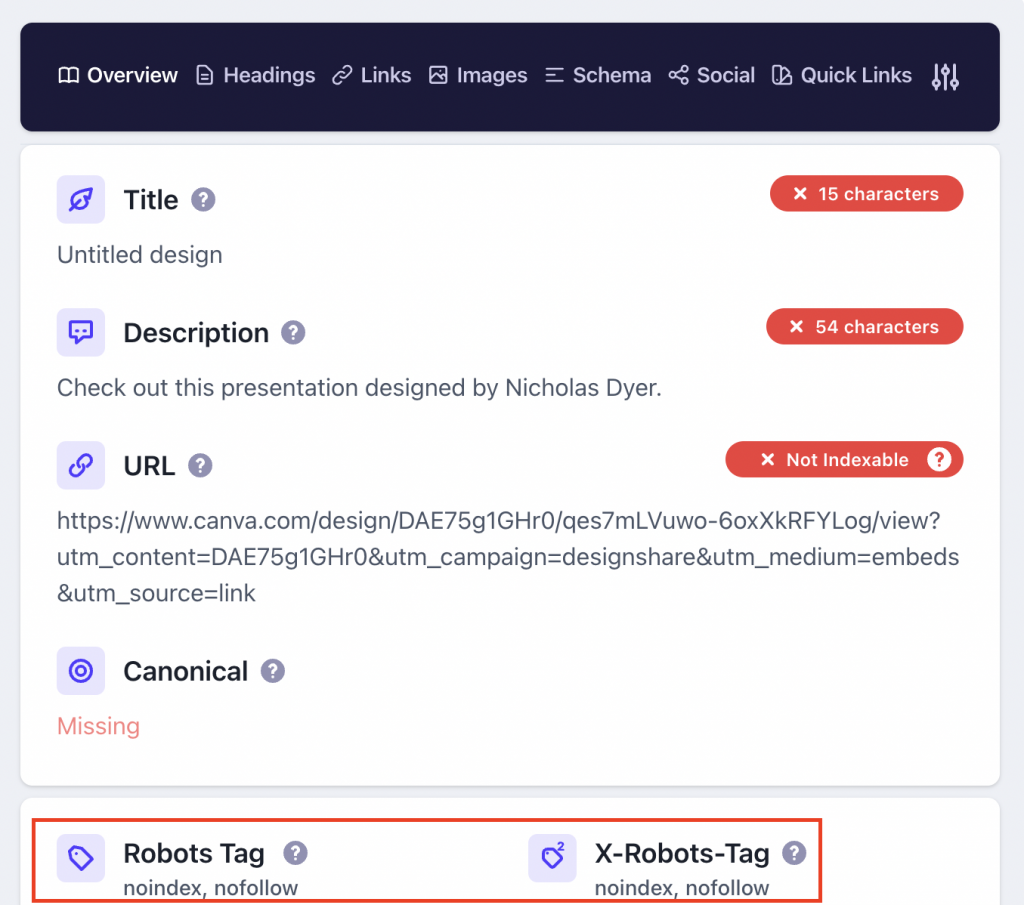
If they didn’t do this, people could find a way to maliciously insert dofollow links from Canva.com back to their website like this:
Not only did they nofollow, noindex these presentation pages but they also created an external redirect page for links to add an extra layer of security:
Bottom Line
If you want to take your customer acquisition to the next level, you’ll want to create a watch list of big brands and monitor their SEO strategies over time. If you don’t have the skills or the time to stay up to date with the latest strategies, allow us to build a custom strategy for your business. We’re only a click away.